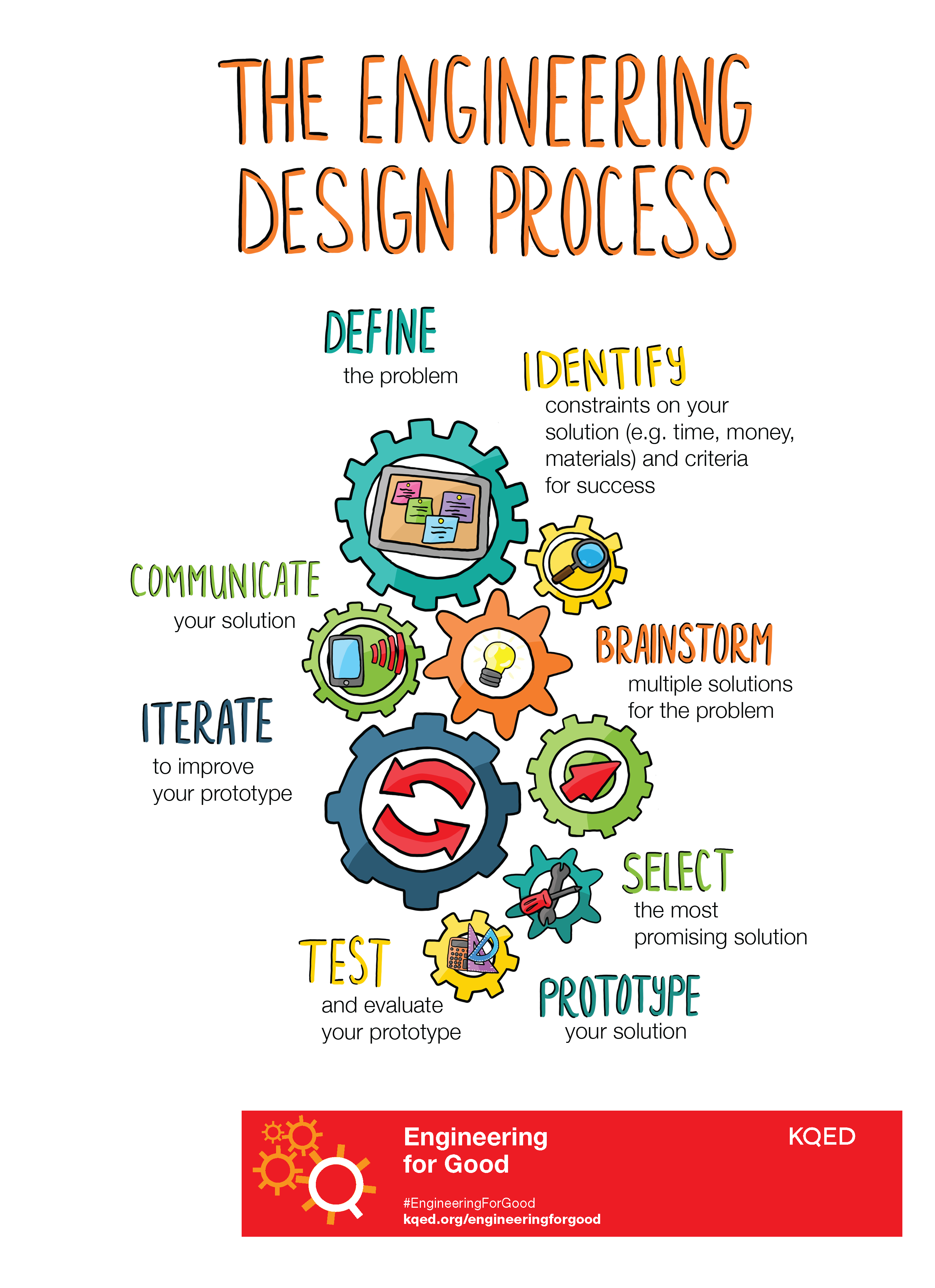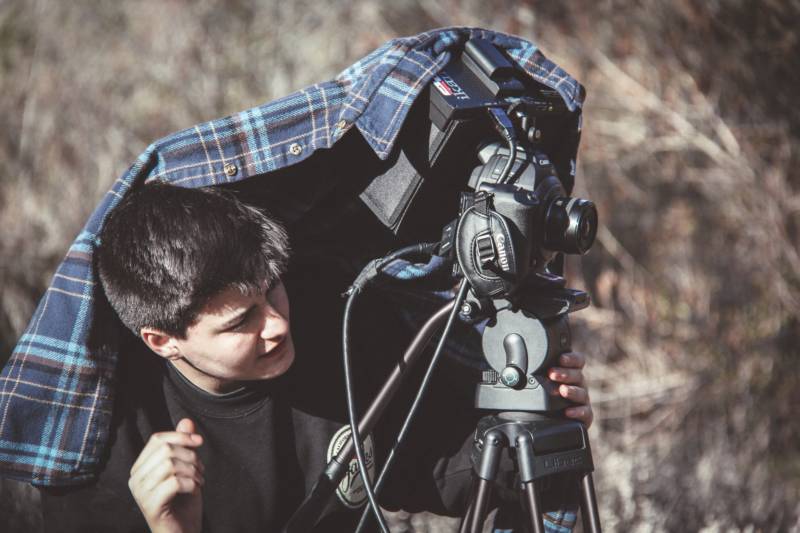It might just be the understatement of the day to say that teens spend a good part of their free time watching videos. While it’s important to limit how much they watch and what they watch, it’s also important for teens to learn more about the digital medium they love so much. Students need more time in the classroom learning how the many videos, movies, films and documentaries they watch are made. And the best way to learn is to make them! Students are experts at viewing online content, but in order to understand what they’re watching they should also be participants and creators.
So this past year I introduced a project in my biology class that would allow students to better understand the filmmaking process — including the very first steps of creating a film proposal. For the project, I asked my Biology students to connect a topic covered in class with a real-world, ongoing problem or issue. Student groups would research their environmental problem, then write their own “elevator pitch” for a documentary about the problem and a possible solution.
For example, one student, whose father had passed from leukemia ten years ago, proposed a documentary on new cell mutation inhibitor therapies in order to communicate in simpler terms the incredible recent breakthroughs in saving lives.
Making science documentary proposals checks off many important boxes of cutting-edge 21st-century learning. It is project-based and inquiry-based, requiring students to be creative and think critically. It requires students to research, to tell fiction from non-fiction, to find and communicate important information with empirically-based facts. We are teaching them science literacy, how to find their own voice, make their own media, and be a strong part of social discourse.
One of the most important concepts I like to bring to my science students is: Science answers questions while engineering solves problems. With this project we can accomplish both: students are engaged with questions and problems they want to investigate. Everyone loves a good story, and we can combine storytelling with science evidence in an entertaining and educational medium. Let’s take “Shark Week” on the Discovery Channel as an example. While the content creators are giving us many important facts about shark behavior, interaction with humans, and current issues using top experts in the field, they also do a great job of telling an entertaining story.
Here’s the process I used to get my students engaged in the first steps of creating a science documentary.
Remember: The project is for students to create a proposal for a documentary, not the documentary itself. Students will not be expected to make a full documentary, but they will be expected to plan as if they are approaching the Discovery Channel or Netflix to be given a “green light” on their science documentary.
The Steps:
1. Pick your Topic Question: Students choose a question they want answered about something they don’t already know. This project is not simply a report, it should be a new discovery for the students. The question must also have available research information. In other words, we all want to know if there is intelligent life on Mars, but at this point there is no readily available information on this. Maybe a better question might be, “How is NASA searching for intelligent life on other planets?”
In my classroom, the question must be under the umbrella of a subject we studied, otherwise the kids can get derailed. Plus, you want this project to strengthen concepts taught in class.
Side Lesson: During the year I have “Science Friday” where we answer miscellaneous questions they’ve had during the week. I love it when students get inquisitive during class discussions, but this can easily sidetrack the task at hand so I encourage them to write questions in their notebook for us to discuss on Friday. They can go back to these questions for possible topics for the documentary project.
2. Research Using Trusted Sources: Visit KQED Learn and check out their amazing resources (under “Make & Share Resources”) that help students conduct authentic research and find reliable resources. If you can, use your librarian—if you have time, schedule a period in the library for research. Have students keep notes on all their sources and research. They will turn this into you on elevator pitch day.
3. Review: Use the Engineering Design process to make sure their question is answered in a process that is evidence-based and actually answers the question! I always go back to my favorite engineering design graphic to streamline the process. This is where students often go wrong and veer away from their original vision. If their research is rambling, their topic wasn’t strong and they will need to rethink their question.

4. Storyboard: Students should draw a simple, two sided 8.5×11 paper that shows the flow of the “story” in simple pictures. Remind students that their movie is not just a documentary about science facts. Students are telling a story. They are delivering truth. This is a film that should pull people in and make them want to discover along with the filmmakers. Their storyboard will help them round out their vision.
5. Elevator Video Pitch: This is simply their movie team on camera, speaking in equal time of no less than 30 seconds and no more than 1 minute. Direct them by telling them to role-play asking the head of Netflix to fund their science documentary.
Side Lesson: If you have time, have students propose a budget for their video. This is the “Define” step of the Engineering Design process. Have them learn the business side of things by preparing a budget sheet for everything from cameras to transportation to permits to feeding the crew. Don’t get too caught up in the dollars and cents, just give your students a good introduction to thinking through a budget.
Take it Further: Have students make a promo video! If you are not familiar with video recording on devices, I highly recommend taking the KQED Teach course Video Production for the Classroom. Most students are very familiar with video making on their devices, but you should familiarize yourself with the process too.
Assessment
Students will turn in their research notes with sources, their story board, and share their elevator pitch video with you. You may even want to incorporate peer review with a simple question: “Would you fund this movie after watching the elevator pitch? Why or why not?”
The Position Statement of the Next Generation Science Standards includes: “It is essential that all students have access to a high-quality science education that provides them with the skills and knowledge they need to be well-informed citizens, to be prepared for college and careers, and to understand and appreciate the scientific enterprise.”
Have students get one step closer to this goal by leading their own discoveries, creating their own media, and learning how to write a compelling “elevator pitch.”

